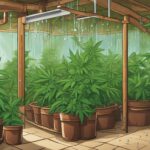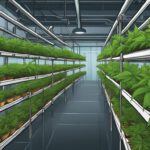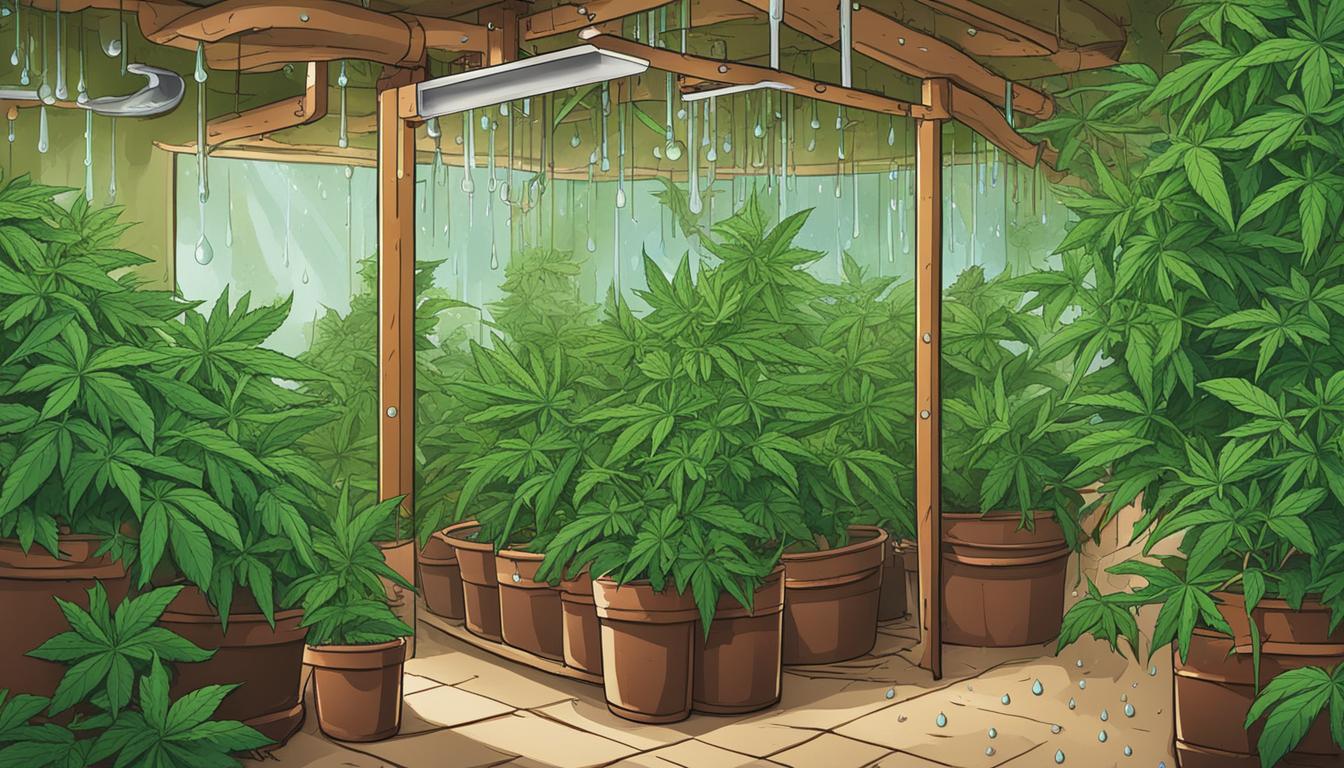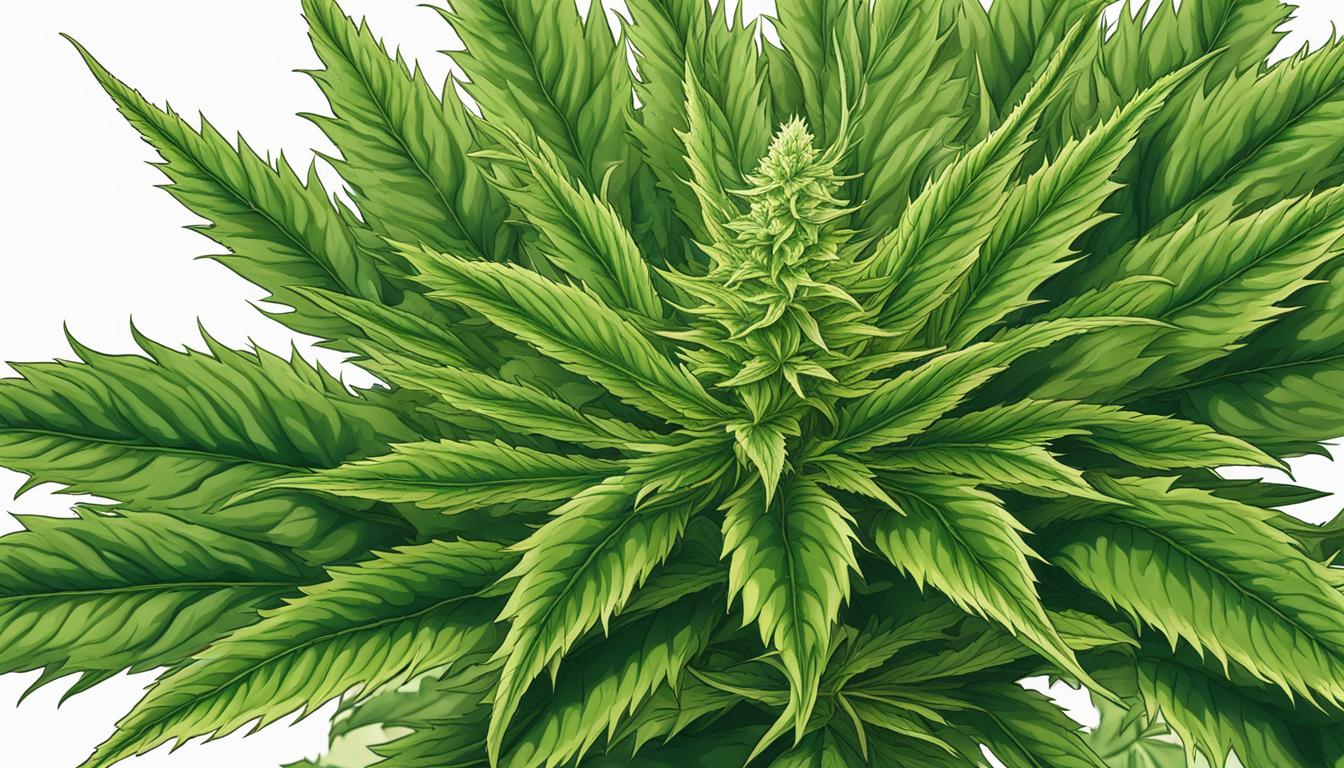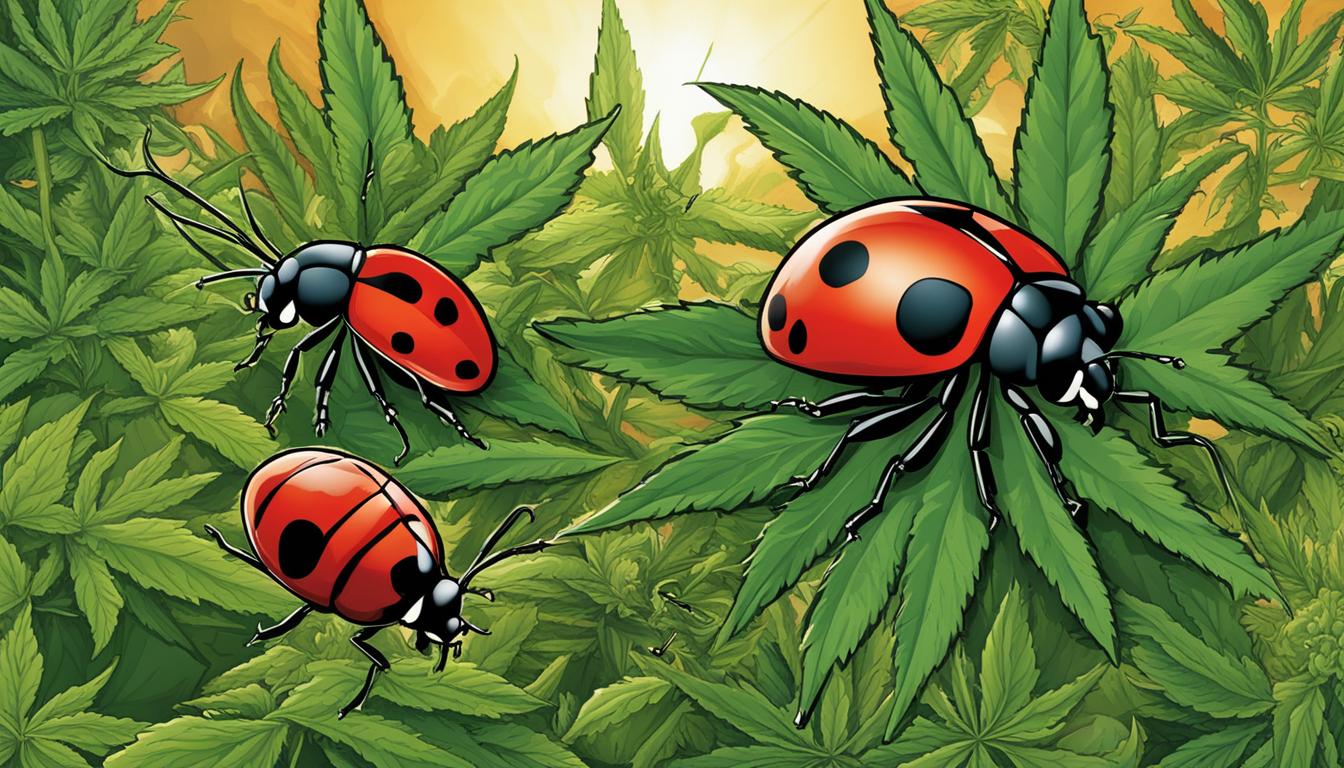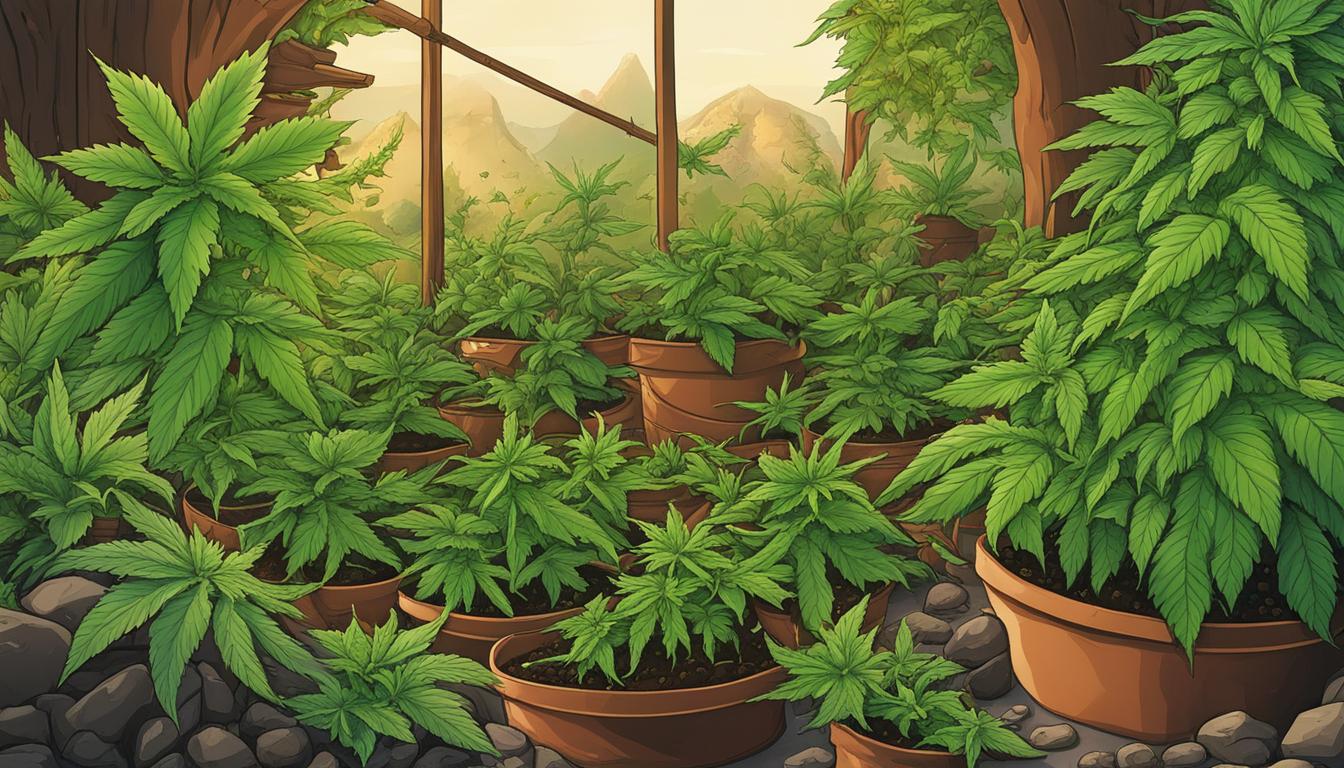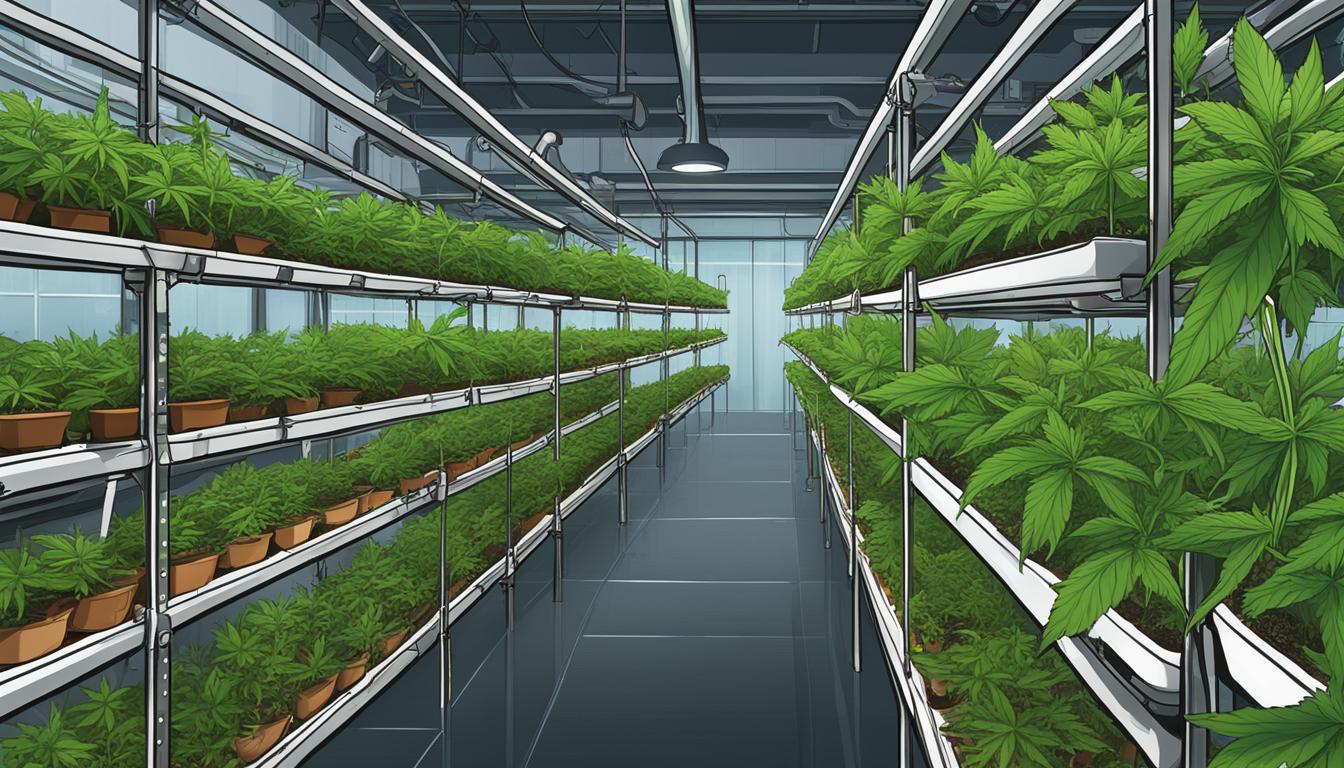If you’re planning to cultivate cannabis indoors, proper humidity management is crucial for healthy growth and maximum yields. Understanding how to maintain ideal humidity levels in your grow room can prevent issues like mold, mildew, and nutrient deficiencies.
The right humidity range can also support optimal plant growth by facilitating nutrient uptake, photosynthesis, and transpiration. In this section, we will explore the importance of maintaining proper humidity levels in cannabis grow rooms and discuss effective strategies for humidity management.
Key Takeaways:
- Maintaining proper humidity levels is essential for healthy cannabis growth and maximum yields.
- The right humidity range can prevent issues like mold, mildew, and nutrient deficiencies.
- Humidity affects plant growth by facilitating nutrient uptake, photosynthesis, and transpiration.
- Effective humidity management strategies include the use of dehumidifiers, humidifiers, ventilation systems, and proper air circulation.
- Regularly monitoring and adjusting humidity levels can ensure optimal growing conditions for your indoor cannabis garden.
Understanding the Impact of Humidity on Cannabis Plants
In order to maintain healthy cannabis growth, it’s crucial to understand the impact of humidity on your plants. The optimal humidity levels for cannabis cultivation typically range between 40% and 60% relative humidity (RH). This range is ideal for promoting healthy photosynthesis and transpiration, which are essential for plant growth and nutrient absorption. Maintaining proper humidity levels can also prevent issues such as mold, mildew, and nutrient deficiencies.
When humidity levels are too high, plants can become susceptible to mold and mildew growth, which can be detrimental to their health. On the other hand, when humidity levels are too low, plants can become dehydrated and unable to absorb essential nutrients. This is why humidity maintenance is crucial for healthy cannabis growth.
To ensure you maintain the ideal humidity range, it’s important to regularly monitor humidity levels using a hygrometer. This device will give you accurate readings of the humidity levels in your grow room, allowing you to adjust environmental factors as needed.
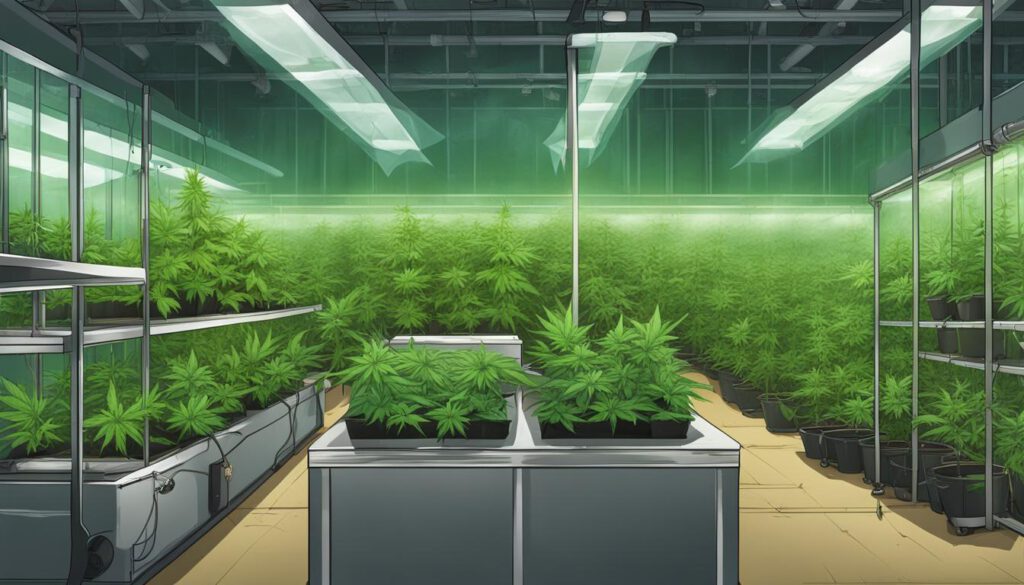
Utilize a humidifier
On the other hand, a humidifier adds moisture to the air and is necessary during the vegetative stage when plants require higher humidity levels. Place the humidifier near your plants and set it to maintain a humidity range of 60-70%. Avoid pointing the humidifier directly at your plants, as this can cause moisture to accumulate on leaves and lead to issues like powdery mildew.
Install proper ventilation and air circulation systems
Good ventilation and air circulation help maintain consistent humidity levels throughout your grow room. Install an exhaust fan to remove stale air and a circulating fan to distribute fresh air. You can also use a hygrometer to monitor humidity levels and adjust your ventilation and air circulation settings as needed.
Control temperature to control humidity
The temperature of your grow room can impact humidity levels. When the temperature is too high, the air can hold more moisture, leading to increased humidity levels. Conversely, lower temperatures decrease humidity levels. Maintain a temperature range of 75-85°F during the day and 60-70°F at night for optimal humidity control.
Monitor humidity levels regularly
Regularly monitor humidity levels in your grow room using a hygrometer. Check humidity levels at least twice a day and adjust your humidifier or dehumidifier settings as needed. Keeping consistent humidity levels is key to ensuring healthy cannabis growth and maximizing your yields.
Tips for Regulating Humidity in Cannabis Cultivation
Regulating humidity is essential for maintaining healthy and productive cannabis plants. Here are some tips to help you effectively manage humidity levels in your grow room:
- Monitor humidity levels: Regularly check the humidity levels in your grow room to ensure they are within the optimal range. Utilize a hygrometer to measure the humidity and make adjustments accordingly.
- Adjust environmental factors: Humidity levels can be influenced by various environmental factors, such as temperature and ventilation. Make sure to maintain consistent temperatures and proper air circulation in your grow room to help regulate humidity levels.
- Utilize technology: Consider investing in a humidifier or dehumidifier to help control humidity levels. These devices can be programmed to turn on and off at specific humidity thresholds to maintain an optimal range.
- Choose the right growing medium: Certain growing mediums, such as hydroponics, can be more prone to high humidity levels. Consider using a soil-based medium or adding perlite to the soil to improve drainage and decrease humidity.
- Prevent water buildup: Standing water in trays or containers can lead to increased humidity levels and promote mold and mildew growth. Make sure to remove any excess water promptly and ensure proper drainage in your growing area.
Importance of Maintaining Proper Humidity in Cannabis Grow Rooms
Maintaining proper humidity levels is crucial for healthy and productive cannabis plants. High humidity levels can lead to issues such as mold and mildew, while low humidity levels can cause nutrient deficiencies and stunted growth. By effectively regulating humidity levels, you can create an optimal environment for your cannabis plants to thrive and maximize your yields.
Remember to regularly monitor and adjust humidity levels, consider implementing technology and environmental factors, and select the appropriate growing medium to help maintain proper humidity in your cannabis grow rooms. With these tips, you can ensure healthy and productive cannabis cultivation.
Conclusion
In conclusion, maintaining ideal humidity in indoor cannabis gardens is crucial for successful cultivation. By implementing the strategies discussed in this article, you can create an optimal environment for your cannabis plants to thrive.
Regular Monitoring
Remember to regularly monitor humidity levels in your grow room to ensure that they remain within the ideal range. Use a hygrometer to measure humidity levels and adjust environmental factors accordingly.
Adjust Environmental Factors
When humidity levels are too high, consider increasing ventilation or using a dehumidifier. If humidity levels are too low, you can increase humidity by using a humidifier or placing a tray of water near the plants.
Utilizing Technology
There are also technological solutions available for maintaining proper humidity levels in your grow room. Consider using a humidity controller or automated system to regulate humidity levels for you.
Overall, effective humidity management is key to preventing mold, mildew, and nutrient deficiencies while maximizing your yields. By mastering how to maintain proper humidity levels in cannabis grow rooms, you can unlock the full potential of your indoor cannabis garden.
FAQ
Why is maintaining proper humidity levels important in cannabis grow rooms?
Maintaining proper humidity levels is crucial because it directly impacts the health and growth of cannabis plants. Improper humidity levels can lead to issues such as mold, mildew, and nutrient deficiencies, which can negatively affect plant growth and yield.
What are the optimal humidity levels for cannabis cultivation?
The optimal humidity levels for cannabis cultivation vary depending on the growth stage of the plants. Generally, during the vegetative stage, humidity levels should be between 40% and 70%. During the flowering stage, humidity levels should be lower, around 40% to 50%.
How can I control humidity in my cannabis grow room?
There are several methods for controlling humidity in cannabis grow rooms. These include using dehumidifiers to remove excess moisture, using humidifiers to add moisture when needed, ensuring proper ventilation and air circulation, and sealing any leaks or gaps that may allow moisture to enter or escape.
What are some tips for regulating humidity in cannabis cultivation?
To effectively regulate humidity in cannabis cultivation, it is important to monitor humidity levels regularly using a hygrometer. Adjust environmental factors such as temperature and airflow to maintain the desired humidity range. Additionally, utilizing technology like automatic humidity controllers can help you maintain stable humidity levels more efficiently.


